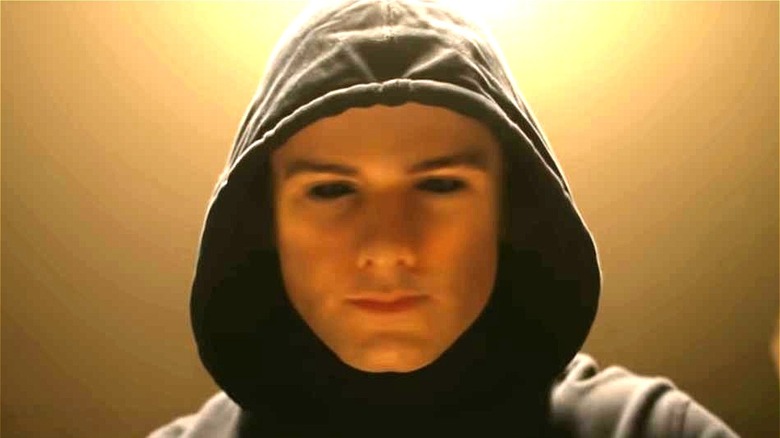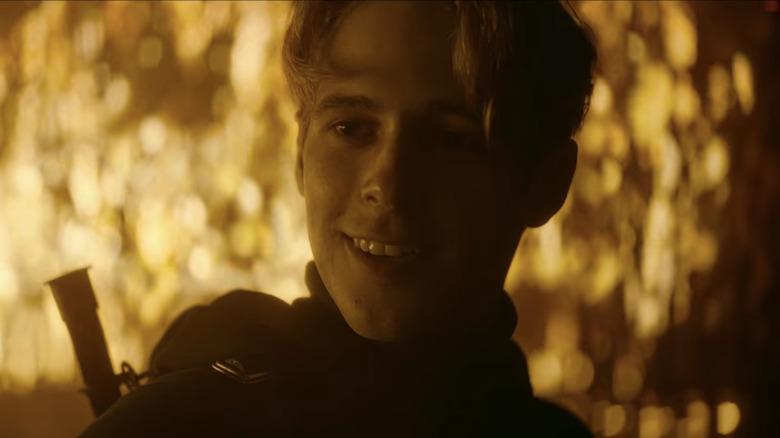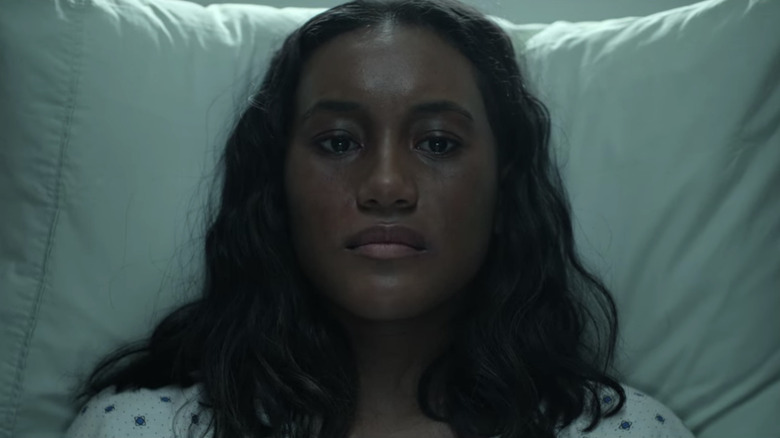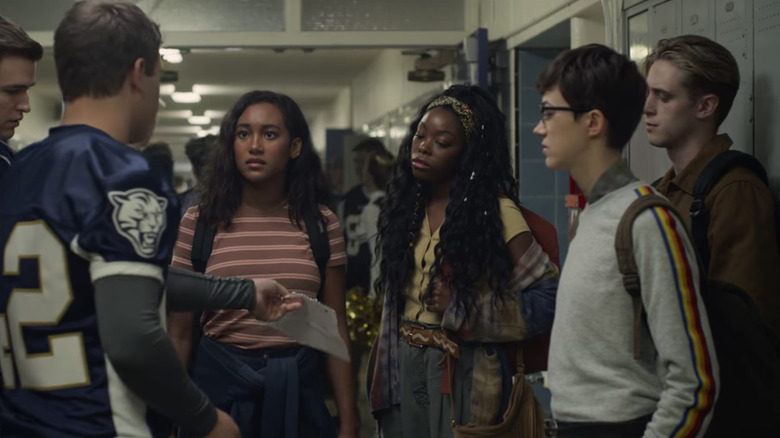The Ending Of There's Someone Inside Your House Explained
In the weeks leading up to Halloween, you may be tempted to rewatch some of the best golden age slasher films, like "The Slumber Party Massacre," "Friday the 13th," and, of course, "Halloween." But if you find yourself wanting to dive into a newer take on the slasher genre, Netflix recently added a teen slasher that pays homage to the greats — "There's Someone Inside Your House."
Based on the young adult horror novel of the same name, "There's Someone Inside Your House" stars Sydney Park as Makani Young, a high-school transfer student who moves from her home in Hawaii to live with her grandmother in a much more rural community. A year after the move, as Makani adjusts to her new school and makes friends, some of her fellow classmates are found brutally murdered by a killer who wears a mask identical to each victim's own face.
Like other thrilling slashers, "There's Someone Inside Your House" follows Sydney as she and her surviving friends try to piece together the mystery before it's too late. With plenty of shocking revelations and twists, "There's Someone Inside Your House" keeps you on your toes until the very end, and the murderer's identity is probably one you won't see coming.
Let's take a look at the ending of "There's Someone Inside Your House."
Who is behind the mask(s)?
Part of the killer's modus operandi is revealing their victim's secrets before they're killed. For example, one of the victims is a violent homophobe, and another is a secret white supremacist. With this in mind, it makes sense for viewers to assume the perpetrator is seeking revenge from people who'd hurt them in the past.
A staple of slasher and murder-mystery films is the red herring, which seemingly leads you toward the killer, but in actuality distracts you from the truth. In "There's Someone Inside Your House," one of the most prominent red herrings is Makani's secret fling and the class outsider Ollie Larsson (Théodore Pellerin), who most of Makani's friends believe is the killer. Of course, Ollie is actually not the killer; instead, it's someone who was in plain sight all along.
At the end of the film, Makani, Ollie, and their friends head to the school's fall festival to try to thwart the killer, who they realize is going to strike there next. They arrive to find the cornfield maze up in flames, and Makani and Ollie run to confront the killer right before he kills their friend Zach's (Dale Whibley) father. The killer then takes off their mask and reveals himself to be Zach all along. His motive? Apparently he was fed up with being made to feel guilty for being a privileged white man, and is also sick of people hiding their truest selves.
Before Zach can kill Makani and frame her as the killer, she and Ollie manage to kill Zach in self-defense — but their lives will definitely never be the same.
Everyone has secrets in There's Someone Inside Your House
Throughout "There's Someone Inside Your House," Makani is tortured by her own dark past that seems to haunt her everyday life. In the last half of the film, Makani is almost killed by the masked intruder, but she's thankfully rescued when her friend Alex Crisp (Asjha Cooper) stops by her home. Makani is brought to the hospital to recover, and we finally learn her horrible secret — which also happens to be the reason why she moved from her home in Hawaii to start over.
According to Makani, she was a cheerleader at her old school, and the younger girls were forced to attend a bonfire and drink until they were on the verge of blacking out. At one point, one of the other cheerleaders named Jasmine (Tally Rodin) pushed Makani drunkenly, and an equally-inebriated Makani pushed back — only Jasmine accidentally fell into the fire and was severely burned. Makani was charged and went to trial, but was later acquitted, and her parents sent her to live in Nebraska to start over.
In "There's Someone Inside Your House," it appears that everyone has deep, dark secrets, including those who you'd least expect. Thankfully, Makani's friends reassure her that her mistake doesn't define her as a person, and we see a glimmer of hope for redemption in Makani's future.
An updated take on the slasher genre
"There's Someone Inside Your House" doesn't shy away from the fact that it was inspired by classic slasher films, although it does imbue itself with plenty of modern qualities to make it a fresh take on the genre. A significant aspect of the film is the diverse cast, which features BIPOC characters, a non-binary lead character, and openly gay characters — without making it a big deal or anything to be shocked by.
And while "There's Someone Inside Your House" literally references other slasher films by name, Michael Nordine of Variety noted the way "There's Someone Inside Your House" differs from its predecessors, writing, "Plenty of nostalgia-inflected horror films pay tribute to their forebears while adding their mark to the genre ... but there's a growing sense that the genre peaked in the '80s and there's no sense trying to move it forward. It seems strange for a movement that wasn't fully formed until the 1970s to have so readily embraced the idea that there's nothing new under the sun, and the success of 'Someone' hinges on the fact that it ultimately embraces the future rather than clinging to the past."
Hopefully, we'll continue to see experimental takes on the slasher genre, and have more great titles like "There's Someone Inside Your House" to enjoy in the future.



